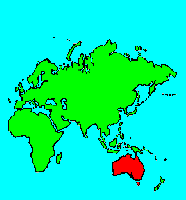SPECIES INFO
Australian Gannet (Morus serrator) breeds on shores of New Zealand and southern Australia. This large white bird has black wing edges and a yellowish head. Adults are thirty-five inches long.
There are no subspecies.Warning: The Morus genus is used at least twice: Once in the plant kingdom for a group of small trees and once in the birds for a group of large heavy bodied sea birds. Consequently, our data base look-up returns genus notes on two species.
Mulberries (genus Morus) are a group of small trees with almost round, toothed leaves. Frequently, some of the leaves on a given tree will have deep round based indentations creating a lobed leaf. This genus comprises about 12 species of trees and shrubs native to Eurasia, including Japan, Africa, and North America. In addition to the Texas mulberry (Morus microphylla) and the red mulberry (Morus rubra), at least two other species in this genus are established in the United States. The fruits of many mulberries are desirable foods for both man and animal. Deer and raccoons often eat the fallen berries.
Furthermore, this genus is also applied to three species of gannets in the bird class. Gannets are seabirds that fly above the ocean and dive from rather high elevations into the sea to capture fish and some marine invertebrates. These birds have narrow wings and a tapered tail.
Boobies and Gannets (Family Sulidae) are a group of nine species of large-sized sea birds. The Gannets are found primarily in the northern oceans and the Sulas are of the tropical seas. These birds typically dive from the air to chase their fish underwater.
Pelicans and Allies (Order Pelecaniformes) contains six different families of marine birds. Most are large species and
most feed on fish. One distinguishing feature of this order is the webbing that connects all four toes.
Aves contains about 8,650 different species of living birds known to science. Each year about one new species is discovered in some remote rain forest or remote island. In addition, scientists have been raising many subspecies to full species status which may raise the species count to 10,000. Birdlife recognizes 10,027 species as of 2011.
However, each year about one species goes extinct. The rate of extinction is increasing, and the rate of new discovery is decreasing, so that the number of bird species will soon begin to decline rapidly. Although different taxonomists would organize the birds differently, there are approximately twenty-seven orders of birds. These orders are broken down into about one hundred and fifty-five different families.
Recent research of the genetic structure of some of the shore birds and owls would indicate that the present organization of orders and families should have some modification.
The birds are a worldwide group of animals that are characterized by having the front limbs modified into wings that are used for flying. Perhaps the most unique feature of the birds is the feathers. These feathers are made up of a central support called a quill and a series of small filaments that are hooked together as barbs.
For many years it was believed that Archaeopteryx discovered in Bavaria was the oldest bird from about 150 million years ago. However, in l986, Sankar Chattterjee, a Texas paleontologist, reportedly discovered a bird in the genus Protoavis that lived about 225 million years ago.
When this project was begun in 1978, we used Austin & Singer for bird taxonomy. Since then, we have adopted many changes, but have kept some older concepts that are still found widely in the literature. Recently, we have used Clements and Howard & Moore. Very recently, we have used Monroe and Sibley for the higher taxonomy of the perching birds.
Backboned Animals (Phylum Chordata) are the most advanced group of animals on earth. These animals are characterized by having a spinal cord or backbone. Most members have a clearly defined brain that controls the organism through a spinal cord. Fish, amphibians, reptiles, birds, and mammals are in this phylum.
Currently, some taxonomists believe that the fish should be divided into two groups (sharks and regular fishes) and that there are some other primitive groups in the phylum such as hagfish or lampreys.
Animal Kingdom contains numerous organisms that feed on other animals or plants. Included in the animal kingdom are the lower marine invertebrates such as sponges and corals, the jointed legged animals such as insects and spiders, and the backboned animals such as fish, amphibians, reptiles, birds, and mammals.


